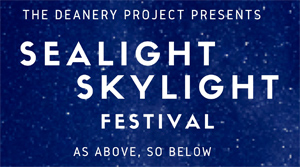Here’s something you might not know about meteor showers: those beams of light that you see dashing across the night sky? They’re tiny — no more than specks of dust, really.
‚ÄúThey‚Äôre particles about the size of a grain of sand,‚Äù says Stephen Payne, senior instructor in the Department of Physics and Atmospheric Science and manager of the at π˚Ω¥ ”∆µ. ‚ÄúWhen they strike the Earth‚Äôs atmosphere, they heat up and give off light.‚Äù
This weekend marks the peak of the Perseid meteor shower, perhaps the most popular stargazing event of the year. At times, there may be as many as 60 meteors visible in the sky per hour, making it one of the most active and visible meteor showers of the year.
And for the third year in a row, Payne and his team are hitting the road to Nova Scotia’s Eastern Shore to help others learn more about the meteor shower, the night sky and how to become better star watchers.
Sharing science
The Planetarium team,¬Ýincluding Kaja Rotermund and Tolson Winters alongside Dr. Payne,¬Ýare featured as part of the in Ship Harbour on August 11 and 12.
 Organized by the (a not-for-profit cooperative focusing on the environment, youth and community, natural building and the arts),¬Ýthe event links together the peak of the Perseid shower with an abundance of bioluminescence in Ship Harbour, making it a great opportunity to experience ‚Äî and learn about ‚Äî¬Ýsome of our universe‚Äôs natural wonders.
Organized by the (a not-for-profit cooperative focusing on the environment, youth and community, natural building and the arts),¬Ýthe event links together the peak of the Perseid shower with an abundance of bioluminescence in Ship Harbour, making it a great opportunity to experience ‚Äî and learn about ‚Äî¬Ýsome of our universe‚Äôs natural wonders.
Each evening, the Planetarium team will lead a short presentation on the night sky and the meteor shower itself, prior to the actual observation (complete with telescopes).
“We focus on showing them how they can find things on their own, and how to remember how to find them,” says Rotermund. “It’s called ‘star hopping,’ making it easier for them to find the same things the next night or in the future when they’re doing it on their own.”
Of course, the shower itself is the main attraction: an event caused by the debris of the comet Swift-Tuttle, which orbits the sun every 133 years.
“Comets are basically dirty snowballs,” says Payne, “and their ices partially evaporate near the Sun, leaving solid particles behind. The Earth then passes through that debris field every year in July-August.”
As for why the Perseids seem to capture people‚Äôs imaginations each year,¬Ý Payne credits the timing. ‚ÄúIt‚Äôs summertime, people are outside, it‚Äôs warm and there‚Äôs more time to look up,‚Äù he says. ‚ÄúIt‚Äôs also a fairly active shower event ‚Äî the count rate of meteors can be quite high.‚Äù
Connecting with the natural world
With a good weather forecast for the weekend, the team is hoping for a quality viewing experience. (It’s been somewhat cloudy at the Perseid’s peak the past two years.)
The team will also do a presentation on bioluminescence, paired with a viewing in the harbour, as well as hands-on astronomy activities before dusk and during the daytime on Sunday, perfect for kids and families.
They’re also not the only Dal connection to the festival: recent Master’s of Environmental Studies grad shalan joudry (who also performed as part of the Bicentennial Launch event for Dal 200), is a new addition to the event this year for Sunday’s activities, presenting on Mi’kmaw ecology in the afternoon and sharing a Mi’kmaw night story during the evening.
“I will be talking about my understanding and work as a Mi'kmaw ecologist and what that means to me,” says joudry about her presentation. “I will share some of the teachings that the Elders shared with me through my research process and my work life, but then also describe what I find as differences and complementary ways of seeing and learning, through Mi'kmaw and mainstream science.”
For the Dal Physics team, the festival is an opportunity to engage people of all ages in science.
“It’s great to see the young people engaged, but it’s always interesting to see how enamored the parents are as well,” says Rotermund. “They’re just as excited.”
“It’s a great unifier, too,” adds Winters. “You can do most of the sciences with astronomy. There’s obviously a lot of physics, a lot of chemistry, biology, geography and the list just keeps going. And it really unifies people because everyone loves space.”
The Sealight Skylight Festival takes place on Saturday, August 11 from 7:30-11 p.m. and on Sunday, August 12 from 2:30-11:30 p.m. in Ship Harbour, Nova Scotia. For full details, . You can also learn more about the Halifax Planetarium at

